#Fomitopsidaceae
Text
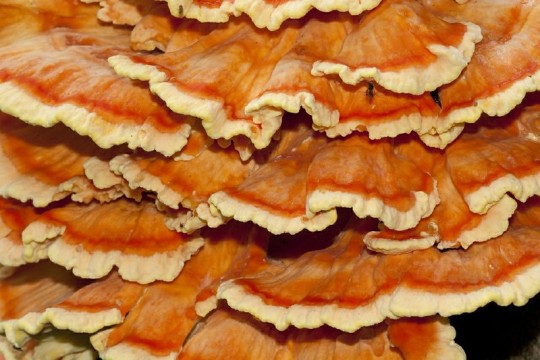
A chicken of the woods fungus (Laetiporus sulphureus) in Transylvania County, North Carolina, USA
by Jim Petranka
#chicken of the woods#fungi#bracket fungi#mushrooms#laetiporus sulphureus#laetiporus#Fomitopsidaceae#Polyporales#Agaricomycetes#Basidiomycota#wildlife: usa
1K notes
·
View notes
Text
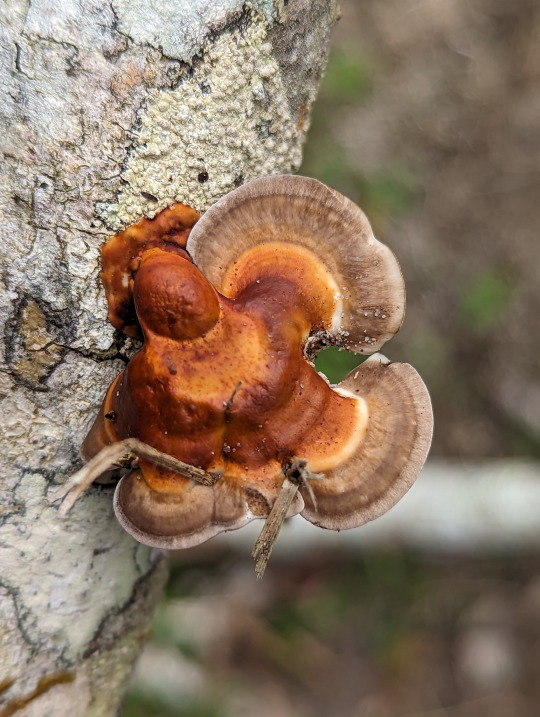

Microporus sp.

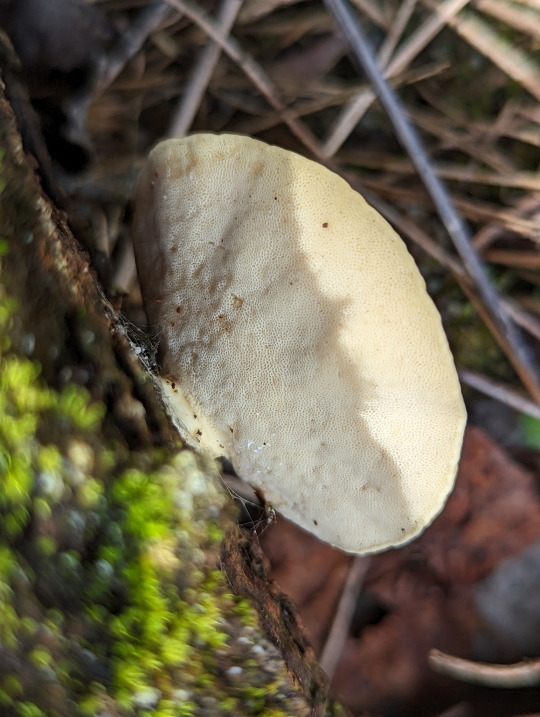
Polyporales sp.
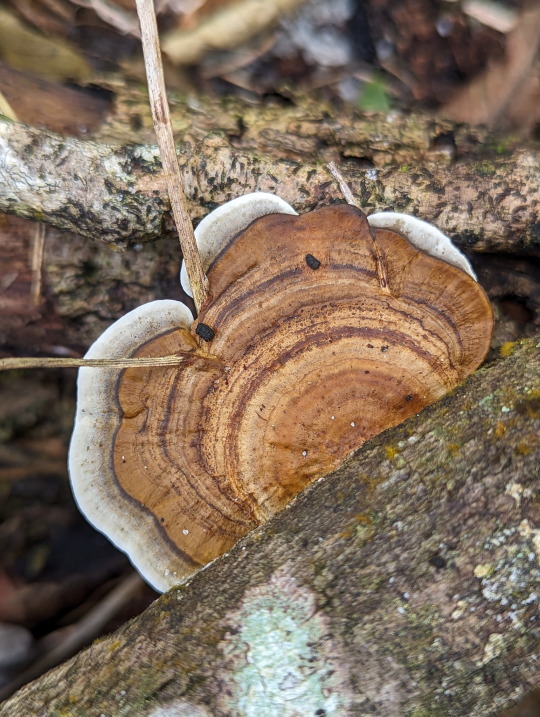

Hexagonia sp.
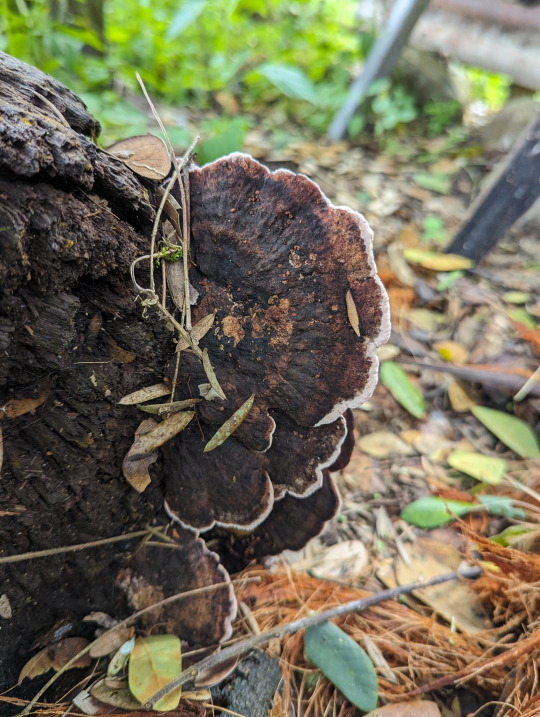
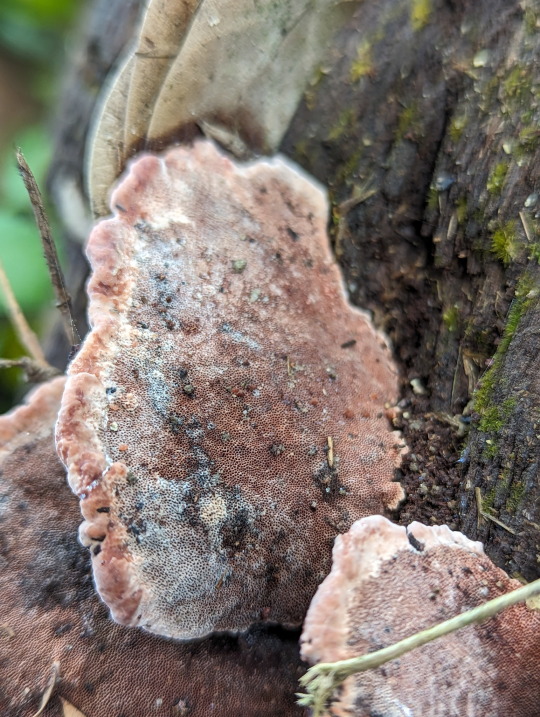
Fomitopsidaceae sp.
Shelf fungi.
30/07/23 - Basidiomycota: Polyporales - cleared farmlands
#fungi#fungus#mycology#Fomitopsidaceae#Bracket Polypores#polypores#Polyporales#Shelf Fungi#Basidiomycota#Basidiomycete Fungi#Hexagonia#Microporus#unidentified
21 notes
·
View notes
Text


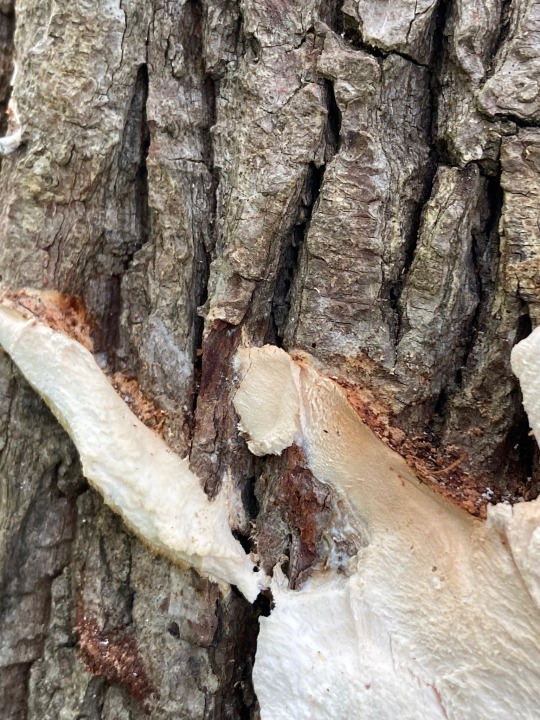

#bracket fungi#polypore#shelf fungi#fomitopsidaceae#trees#forest#ultunaasen#arike fyris#uppsala#sweden
0 notes
Text
FOTD #092 : crab of the woods! (laetiporus sulphureus)
the crab of the woods (also sulphur shelf / polypore) is a bracket fungus of the family fomitopsidaceae. it is a saprophyte & weak parasite that often causes brown cubical rot !! it grows across europe & north america :-)
the big question : can i bite it??
yes & it is quite delicious :-) it has been compared to the taste of crab, lobster & chicken. some deer also eat it !! however, humans should not eat it raw.
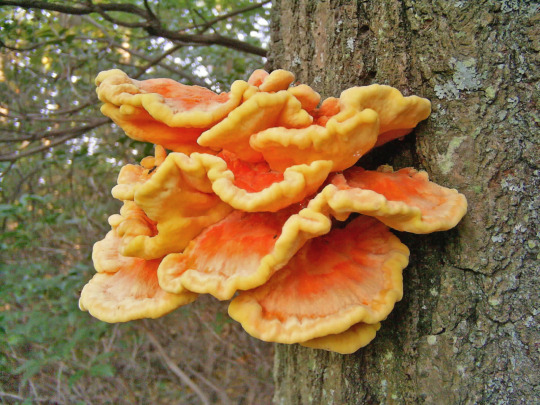

l. sulphureus description :
"the fruiting body emerges directly from the trunk of a tree & is initially knob-shaped, but soon expands to fan-shaped shelves, typically growing in overlapping tiers. it is sulphur-yellow to bright orange in colour & has a suede-like texture. old fruitbodies fade to tan or whitish. each shelf may be anywhere from 5 to 60 centimetres (2 to 23+1⁄2 inches) across up to 4 cm (1+1⁄2 in) thick. the fertile surface is sulphur-yellow with small pores or tubes & produces a white spore print. when fresh, the flesh is succulent with a strong fungal aroma & exudes a yellowish, transparent juice, but soon becomes dry & brittle."
[images : source & source]
[fungus description : source]
#• fungus of the day !! •#[laetiporus sulphureus]#: crab of the woods :#: sulphur shelf :#: sulphur polypore :#092#||#mushrooms#mycology#fungus#mushroom#nature#earth#fungi#forestcore#foraging#cottagecore#crab of the woods#sulphur shelf#sulphur polypore#fotd#fungus of the day
153 notes
·
View notes
Photo

Resinous polypore (Ischnoderma resinosum) at the Triadelphia Reservoir in Maryland, U.S.
Richard Orr
626 notes
·
View notes
Photo
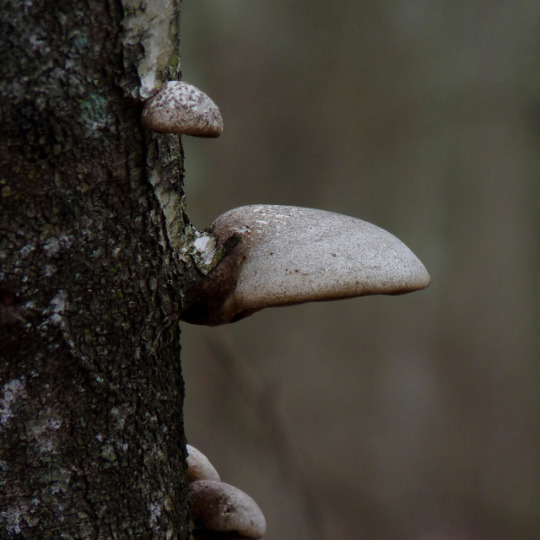
Birch Polypore, Piptoporus betulinus (by me)
#Birch Polypore#Birch Bracket#Piptoporus betulinus#Piptoporus#Fomitopsidaceae#Polyporales#Agaricomycetes#Basidiomycota#Fungi#mushrooms#birch#trees#spring#Lord Stirling Park#Somerset County#New Jersey#mine
17 notes
·
View notes
Text
Birkenpohrling, Fomitopsis betulina


191020, 142022, Birkenpohrling
Birkenpohrling,
Fomitopsis betulina
Notizblog Naturbeobachtungen: https://wp.me/p9TZZ6-tN, …,
Systematik,
Taxonomie
Klasse: Agaricomycetes,
Unterklasse: unsichere Stellung (incertae sedis),
Ordnung: Stielporlingsartige (Polyporales),
Familie: Stielporlingsverwandte (Fomitopsidaceae),
Gattung: Zungenporlinge (Fomitopsis),
Art: Birkenporling,
Wissenschaftlicher Name:…
View On WordPress
#(Bull.) B. K. Cui#Agaricomycetes#Art: Birkenporling#Birkenporling#Familie: Stielporlingsverwandte (Fomitopsidaceae)#Fomitopsidaceae#Fomitopsis#Fomitopsis betulina#Gattung: Zungenporlinge (Fomitopsis)#incertae sedis#Klasse: Agaricomycetes#M. L. Han & Y. C. Dai (2016)#Ordnung: Stielporlingsartige (Polyporales)#Polyporales#Stielporlingsartige#Stielporlingsverwandte#unsichere Stellung#Unterklasse: unsichere Stellung (incertae sedis)#Wissenschaftlicher Name: Fomitopsis betulina#Zungenporlinge
0 notes
Video
Postia caesia by Lukas
Via Flickr:
On a fallen Scots pine (Pinus sylvestris) branch.
#Fungi#Basidiomycota#Agaricomycetes#Polyporales#Fomitopsidaceae#Postia#Polypore bleuté#Postia caesia#Blue Cheese Polypore#sinihaprakääpä
10 notes
·
View notes
Text
Chicken of the woods

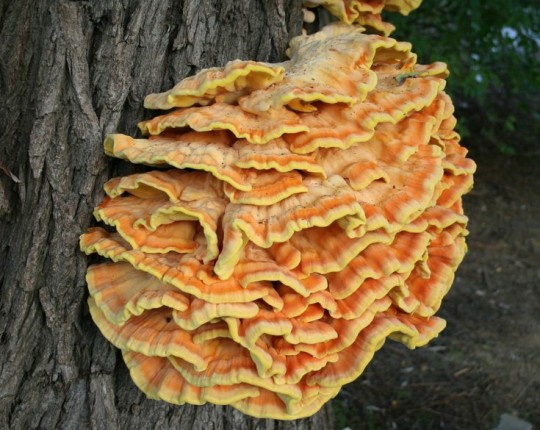
Laetiporus is a genus of edible mushrooms found throughout much of the world. Some species, especially Laetiporus sulphureus, are commonly known as sulphur shelf, chicken of the woods, the chicken mushroom, or the chicken fungus because many think they taste like chicken.
Physical features important for identification of Laetiporus species include the color of the cap surface and the pore surface, and the general habit of the fruiting bodies: some species are "butt rot" species that occur in rosettes at the bases of trees.
Chicken of the woods is found growing on or at the base of dead or dying hardwood trees; most commonly on oak but also cherry or beech. It can also be found on dead conifer stumps. Chicken of the woods has been known to fruit on living trees as well.
Chicken of the Woods Mushroom Benefits:
Antioxidant.
Antibacterial.
Anti-carcinogenic.
Hormonal balancing.
Dental healthcare.
Anti-inflammatory.
Diabetes treatment.
A warning for mushroom and chicken aficionados: the Laetiporus has been known, albeit in very small percentages, to cause allergic reactions. They're pretty mild nevertheless, like swollen lips or in rare cases nausea, vomiting, dizziness, and disorientation.
Chicken of the wood connections:
Genus: Laetiporus; Murr. (1904)
Family: Fomitopsidaceae
Kingdom: Fungi
Class: Agaricomycetes
Division: Basidiomycota
Order: Polyporales
#babacore#witch#witchcraft#pagan witch#nonbinary#naturecore#mushroomcore#mushrooms#mushroom#mushies#cottage witch#cottagecore#goblincore#foraging#nature#forestcore#forest#fairycore#grandmacore#grandpacore
31 notes
·
View notes
Photo



[EDIT] as some of you may have noticed, this is actually Rhodeia, the Oceanid, and NOT Rhodonia, a fungal genus in the family Fomitopsidaceae, as i had accidentally mislabeled her.
pro tip: don’t watch nature documentaries while typing :/
57 notes
·
View notes
Photo

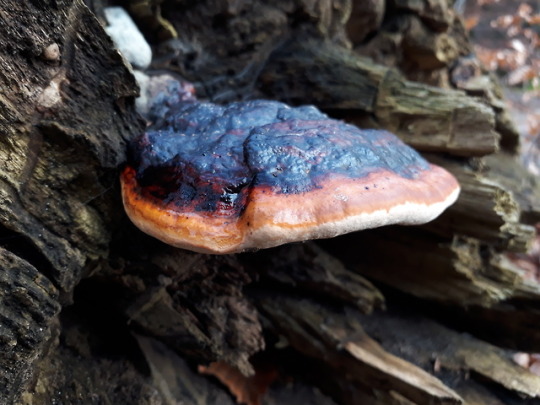

Aarhus, Denmark, February 2019
Red-belted bracket (Fomitopsis pinicola)
Identified by its red and orange belts of colour, this attractive bracket forms its distinctive ring between annual layers of growth, which also form its hoof-like shape as wider and wider layers of tubes (pores pictured underneath) build up over four or five years.
Like other large polypores - in the Fomitopsidaceae and Ganodermataceae families - this fungus is far too tough to be edible.
#mycology#mushrooms#fungi#wild fungi#wild mushrooms#fomitopsis#fomitopsis pinicola#red-belted bracket#bracket fungi#bracket#inedible fungi#colourful fungi#denmark
44 notes
·
View notes
Photo

Phaeolus schweinitzii (Dyer's Polypore) Fomitopsidaceae (Red-Belt Family) Polyporales (Order of Conks) https://www.instagram.com/p/CETQAmLMAl9/?igshid=gpkm2msx3bvk
0 notes
Photo

It’s time for #chickenofthewoods #forage Laetiporus is a genus of edible mushrooms found throughout much of the world. Some species, especially Laetiporus sulphureus, are commonly known as sulphur shelf, chicken of the woods, the chicken mushroom, or the chicken fungus because many think they taste like chicken. Wikipedia › wiki › Laetiporus Laetiporus - Wikipedia Scientific name: Laetiporus Order: Polyporales Rank: Genus Class: Agaricomycetes Higher classification: Fomitopsidaceae #fungus #grateful #summer2020 https://www.instagram.com/p/CBQaIjAJVYy/?igshid=p6i3j871psqi
0 notes
Text





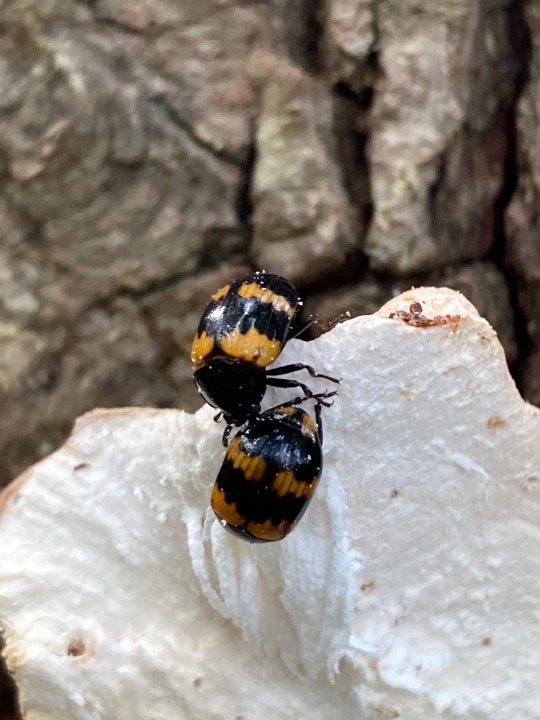
#darkling beetle#diaperis boleti#beetles#insects#bracket fungi#polypore#fomitopsidaceae#trees#forest#ultunaasen#arike fyris#uppsala#sweden
1 note
·
View note
Text
FOTD #135 : red-belted conk! (fomitopsis pinicola)
the red-belted conk is a polypore fungus in the family fomitopsidaceae :-) it is common throughout temperate zones in europe & asia. it produces brown rot & often parasitises rainforest trees.
the big question : can i bite it??
nah, it's inedible !!
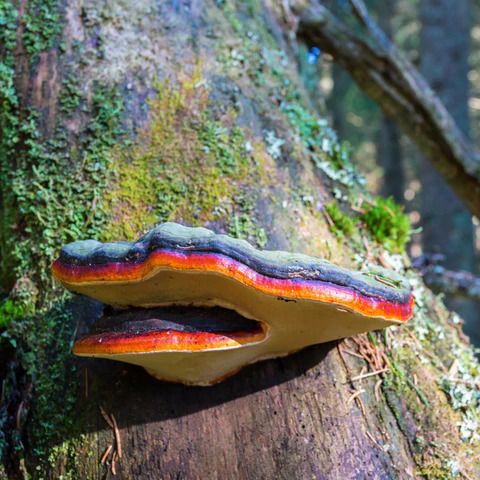

f. pinicola description :
"the cap is hoof-shaped or triangular, & sometimes shelflike. it is hard & tough, & up to 30 cm or more across & 15 cm thick. its surface is more or less smooth, at first orange-yellow with a white margin, later dark reddish to brown & then frequently with an orange margin. the pore surface is pale yellow to leather-brown, 3–4 pores per mm."
[images : source & source]
[fungus description : source]
#• fungus of the day !! •#[fomitopsis pinicola]#: red-belted conk :#135#||#undescribed#fungi#image undescribed#earth#nature#cottagecore#mushroom#foraging#forestcore#fungus#mushrooms#mycology
125 notes
·
View notes
Text
youtube
Le polypore soufré
Laetiporus sulphureus, le Polypore soufré, autrefois Polyporus sulphureus ou Polyporus sulfureus est une espèce de champignons basidiomycètes de la famille des Fomitopsidaceae.
Nom scientifique : Laetiporus sulphureus
Rang : Espèce
Classification supérieure : Laetiporus
Ordre : Polyporales
Sous-classe : Agaricomycetidae
0 notes